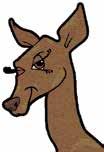


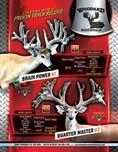



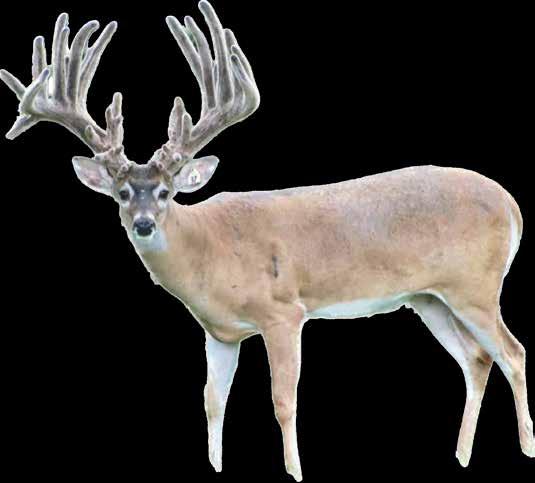







































Jason Becker PRESIDENT Campbellsville, KY jasonbecker757@gmail.com
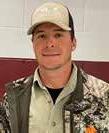



757-692-5820
Jake Anderson
VICE PRESIDENT 925 Guston Rd Guston KY 40142

janderson@theluskgroup.com
270-547-8432
Chance Groves 11158 New Bowling Green Rd Smiths Grove KY 42171


hdwhitetailbreeders@gmail.com
270-308-0973
David Miller
1873 Forestville Rd
Mumfordville KY 42765
270-537-5357
Joe Miller 4195 Penchem Rd
Guthrie KY 42234
jmgreenlandsod@safecom.link
270-483-2140
Tony Maddox CHAIRMAN
725 Rabbit Town Rd Winchester KY 40391
solidrockwhitetails@yahoo.com
859-556-7253 • 239-340-1171
PRESTON THOMAS SECRETARY
Princeton KY 42445
prestonthomasfarms@gmail.com
270-889-1001
WES BREWER TREASURER
Hodgenville KY 42748
mwb5304@yahoo.com
502-297-1309
Henry Woodard
9776 Roseville Rd Glasgow KY 42141
woodardpropertiestn@gmail.com
423-595-8898
Ethan Woosley
9064 Shrewsbury Road
Leitchfield, KY 42754
Singlecreekwhitetails@gmail.com
270-316-9698
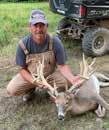

Hello Y’all, on behalf of KALA we hope that everyone has had a very successful fawning season this year! This is an exciting time of the year with bucks growing out, and fawns being born we can hone our perspective of where we want to take our genetics in the future! It is truly amazing how you can transform your herd in just a few years! It is now bottle feeding time for many farms across the industry, a grueling painstaking process, yet very rewarding as it can totally transform the demeanor of your herd. Soon summer will once again turn to autumn and we will be in the middle of breeding season, now is the best time to start planning for the upcoming year!
This year 2023, there are many exciting events and activities for Kentucky that are projected to be a great time for the family, providing fellowship and

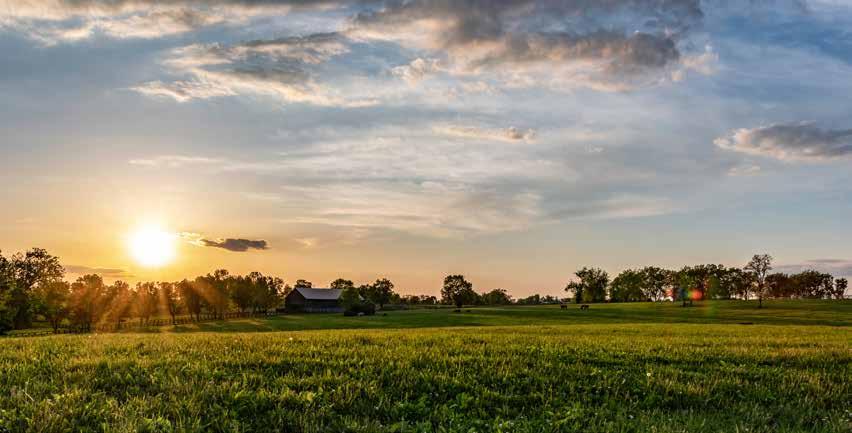
opportunities for the farm. In August we have the Kentucky Alternative Livestock Association Fundraiser event, being held at the Northern Kentucky Convention center August 12,2023. We have great booth spots available, for just $100 you can set up and showcase your farm to the attendees, or perhaps take your sales to a new level. We are looking forward to seeing everyone there! Throughout the year there are many state & National level fundraisers local and afar that are always amazing events to support.
Thanks, Ethan Woosley KALA Magazine Chairman 270-230-7978
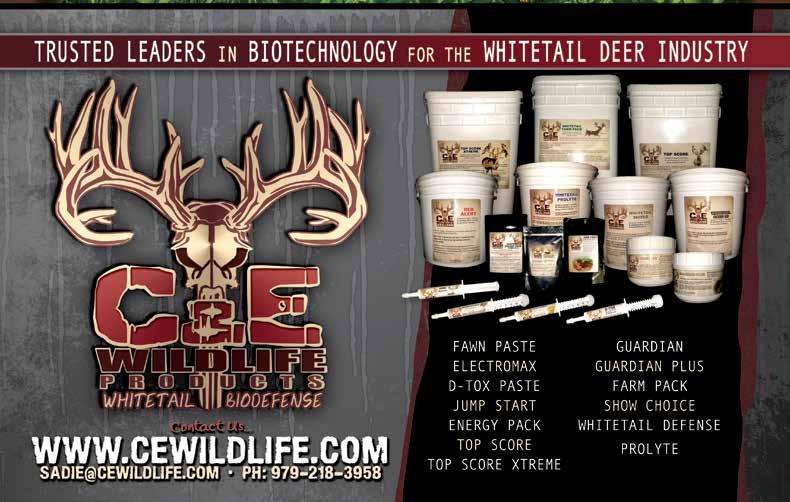
MEMERSHIP DUES:
Regular Voting Membership $100 Out of State Associate Membeship $50 (non-voting)
I hereby make application for membership the Kentucky Alternative Livestock Assocation.
I agree to confirm to the bylaws and code of ethics governing the association.
Signature
Date: ______________________
Member Name:
Farm Name:
New Member: ________ Renewal: ________
Address:
Phone:
Email:
Online application avaliable on our Website: kalaky.net

Mail to: Jason Becker
737 Finely Ridge Road
Campbellsville, KY
JasonBecker757@gmail.com 757-692-5820

In 2023 we began attempting to create new ways to provide free advertising for our Kentucky farms, one of those is the KALA Classifieds! Sometimes doing the advertising to make the sale is increasingly more difficult, why not make it easy! If you are buying, or selling anything deer related this is for you! If you are interested in placing an Ad, please reach out to Josh Moore or Ethan Woosley and we will get that done for you! Thanks to Josh for stepping up and helping KALA this year! We are here to serve.

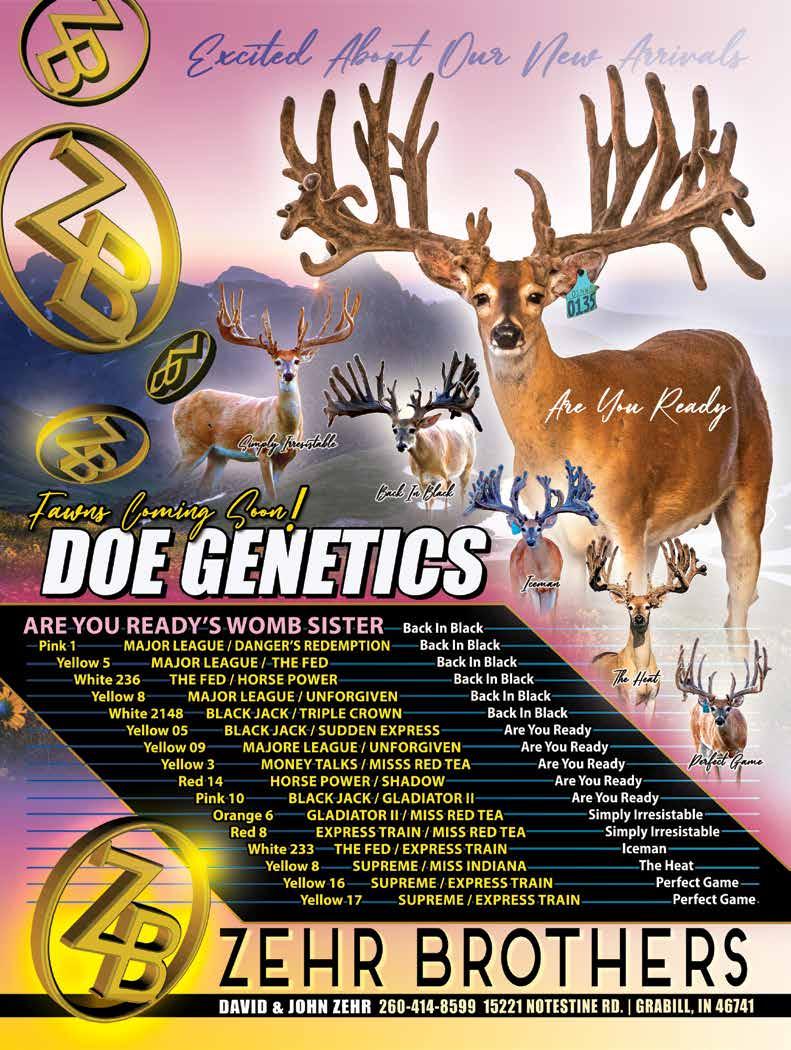
Munfordville Kentucky, a small town nestled up to the banks of Green river is often a town overlooked, but definitely not to be slighted. Munfordville named after the man Richard Jones Munford, who donated the land to establish a county seat in 1816 has a unique history that ties together many towns across the map. The battle of Munfordville 1862, the American Civil War, confederate forces attacked a union garrison resulting in the surrender of 4000 union troops 3 days later. Today this quaint little town is known for its proximity to many outdoor attractions that continue to be very popular during the summer months, the local shops frequented by many throughout the year, as well as the many farms throughout the area that offer a unique balance of Agricultural creativity & diversity.
Munfordville has been a place called home for thousands of individuals since its inception in 1862, but for David Miller at
Forestville Whitetails, it became a home and a place to establish framework for his businesses. Soon to be 28 years ago David started on a journey that was largely unheard of at the time. Forestville Whitetails was established, what began as a hobby starting out with a couple deer it grew into a family farm with the addition of his 8 sons, they were able to focus on not only raising Whitetail, hay, & corn, but David is also known for his skill in building houses & various types of facilities and is now getting into raising Fallow Deer.
Starting out in the cervid industry nearly 28 years ago has enabled David to develop a wealth of knowledge that he is willing to share to new and prospective farmers. As the framework for new farms are first strategized on paper, David states that you should decide where you want to be in 5 years, you should look around awhile, visit as many farms as you can and don’t ever buy the first thing you see without learning what you are looking at. David suggests that you start with DNA’d genetics from proven producing bloodlines and get the best genetics you can afford. You should certainly become acclimated to farming before jumping headfirst off the diving board! David also said that “If I were to start over id buy 5 bred does bred to male semen with high end genetics that are 3-4 years old so you can see past production.” That is very important, as well as being sure when you sell that you are making a good decision. There are numerous occasions where
a certain buck or doe was sold hastily and turned out to be a phenomenon.
Keeping deer alive has been a huge hurtle for Forestville Whitetails, being targeted by EHD on multiple occasions, it always seemed to hit the best genetic deer on the farm. As David says, counting the countless deer that have been ravaged by EHD over the span of 28 years would be utterly overwhelming for any farmer. Trying to prepare the herd for the almost annual bout with EHD is one of the biggest hurtles for cervid farms across the industry. At Forestville Whitetails they have started adding a new product to the feed to attempt to deter the threat of EHD. Another hurtle for farmers is often keeping fawns alive. Often for unexplainable reasons much of the yearly fawn crop is lost before they reach one year status across the industry. David suggests making sure to iodine the naval & feet as well as keeping them out of the mud plays a key role in keeping them healthy.
As the years have come and gone starting off as a hobby, usually the deer were brown deer with non DNA’d genetics as there were limited if any testing capabilities available at that time In Whitetail deer. Many years ago, David decided it


was time to implement new industry practices to genetically transform his herd. Throughout the years David began grooming his genetics and began to A.I. to some of the big sires in the
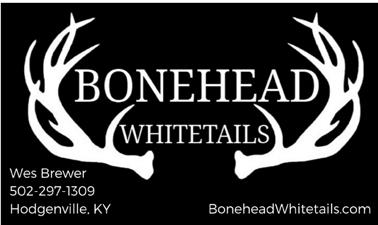


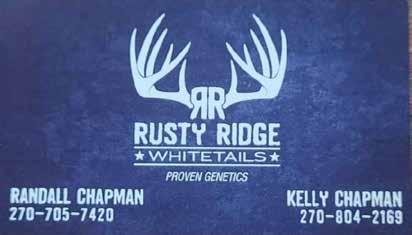
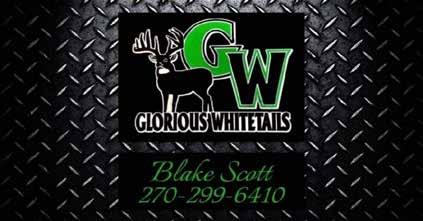




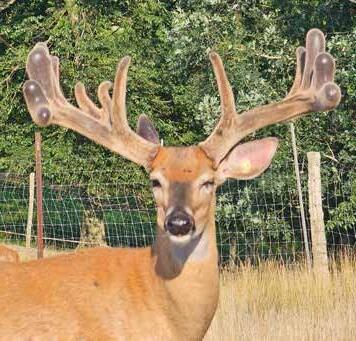

industry at the time. Starting off working with other farmers, it has taken a lot of time but being able to consistently produce big deer and good producing does has become increasingly important. There have been many big sires in the industry that have truly held an integral role at Forestville Whitetails such as Gladiator Sunset, & the Fed, only to name a couple as this list could go on and on. Learning what bucks produce big bucks consistently and keeping everything alive has been the biggest challenge.
Being a part of an industry is one thing, but getting involved in the network of individuals within that industry is very important. It is increasingly important to socialize with other farmers and become friends. Often these friendships or alliances can make all the difference, especially when you need a friend with a common goal. David spent many years before getting involved, but now is a KALA board member and he is hosting a Kentucky Trophy Buck auction this year! With the number of lots being in the triple digits, it should be a great event for Kentucky farmers!

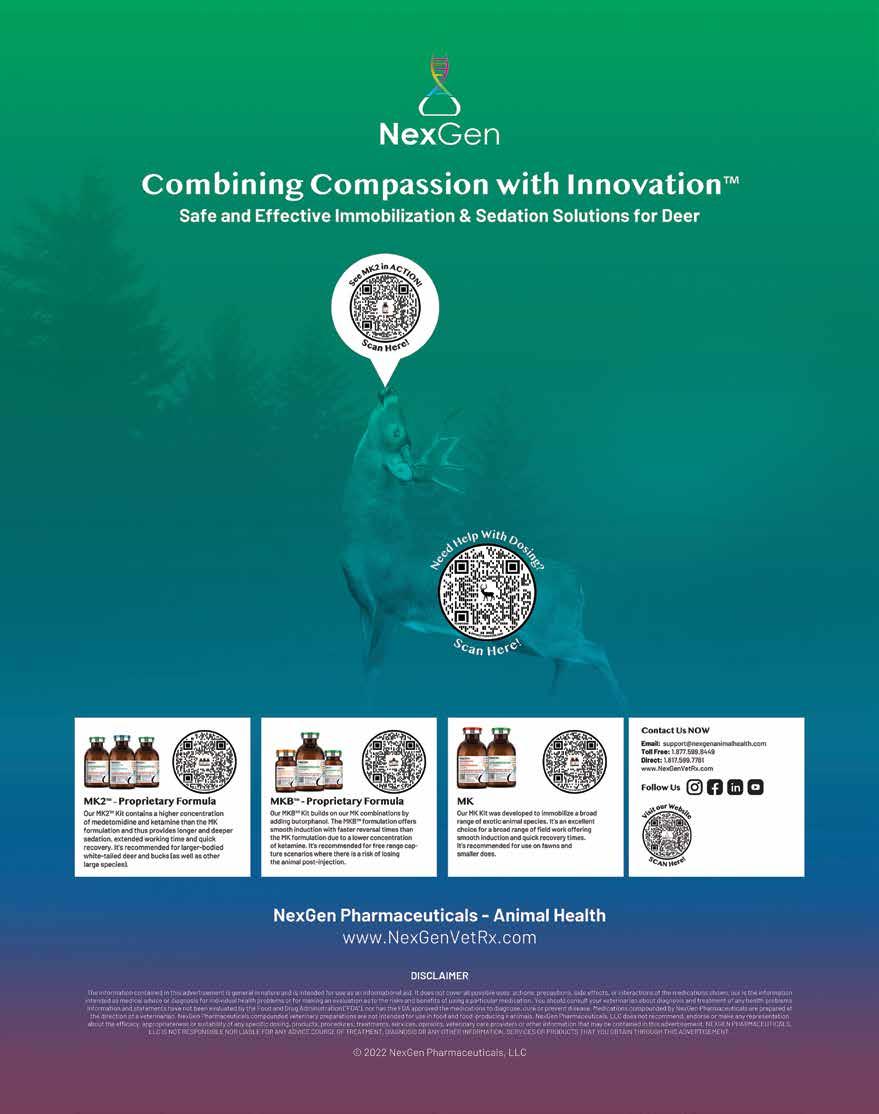





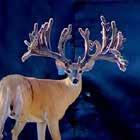
 By: Gail Veley
By: Gail Veley
Blue Creek Whitetails Manager

Jimmie Neeley pauses at the pen of Royal, his favorite doe on the farm he breathes life into seven days a week. As Royal approaches him, it isn’t so much the treat he’s holding that she’s interested in, but rather, the affection he offers along with it. She nuzzles and licks his hand as he strokes her neck and softly talks to her. Her sheer delight in seeing him is obvious. And vice versa. And just like the farm itself, there is a lot to appreciate about Royal, whose pedigree includes Blue Chip, Freeze Frame, Shadow and Tasha among others. This four-year-old doe is also perhaps a symbol of what is good and right in the deer industry and at Blue Creek Whitetails. Their superior animal husbandry skills combined with breeding superior genetics, finds Blue Creek Whitetails producing some of the most elite whitetails in the industry.
The sprawling 250-acre farm in Falfurrias, Texas, is home to approximately 1,150 deer including bucks and does. What that number does not include is the 400-500 fawns expected this season. And while those sheer numbers of deer may seem overwhelming from a management perspective, Neeley, who always keeps the big picture in the back of his mind, lives by this decree. “We take things one step at a time and one deer at a time,” he
explained. “You don’t only focus on the big picture. You learn to slow down and simplify and to keep your goals clearly defined. We have a great team of employees that always goes above and beyond in every circumstance.”
Neeley and his wife Kayla are as devoted as anyone could be in their positions. Yet, both realize how lucky they are to have the dedicated team of employees working right alongside them. “We have one gentleman working here that no matter what time you decide to start that day, he always the first one there. He refuses to show up second to work,” Neeley, 41, shared. “We also have an employee who’s a licensed veterinarian in Mexico. After seeing to the deer, he’s not one bit scared to work hard and pick up a weed eater or get on a tractor. He’s 70 years old and he’s amazing. All of the employees here are amazing and work together seven days a week. Every one of them is a valuable asset. We deeply appreciate everything that they do.”
Neeley, along with farm owners Billy and Alice Oehmig, also appreciate the partnerships they have on a few prized breeding bucks. These include Ice Man with Jade Webster of MVP Whitetails, Simply Irresistible and Wanted with Brad Hassig of Prime Acres as well as Are You

Ready with MVP Whitetails, Prime Acres, Jesse Boger of Limitless Genetics, Kiser Creek and Billy Sage. “With our business partners and production record, we believe we are moving in the right direction,” Neeley said. “Our customer base is growing immensely. They are extremely important to us along with building and maintaining good relationships. We do everything we can to make things right. And we are always looking to improve and make the herd better.”
In their spare time the Neeley’s enjoy going to the beach and also going to the gym to workout. Yet, coming back home to the farm is a feeling unlike any other. At the end of the day, crimson colors cascade as the perfect backdrop to a pen with 100 does thriving among evergreen live oak trees endemic to the Texas terrain. From his back porch Neeley takes the sight in, which never gets old. He lets out a grateful sigh that another day has gone well at this deer paradise. As he lays down next to Kayla and prepares for a good night’s rest, his last waking thought has been known to be “How can we grow bigger deer?” Check out Blue Creek Whitetails on Facebook as well as their website www. bluecreekwhitetails.com.
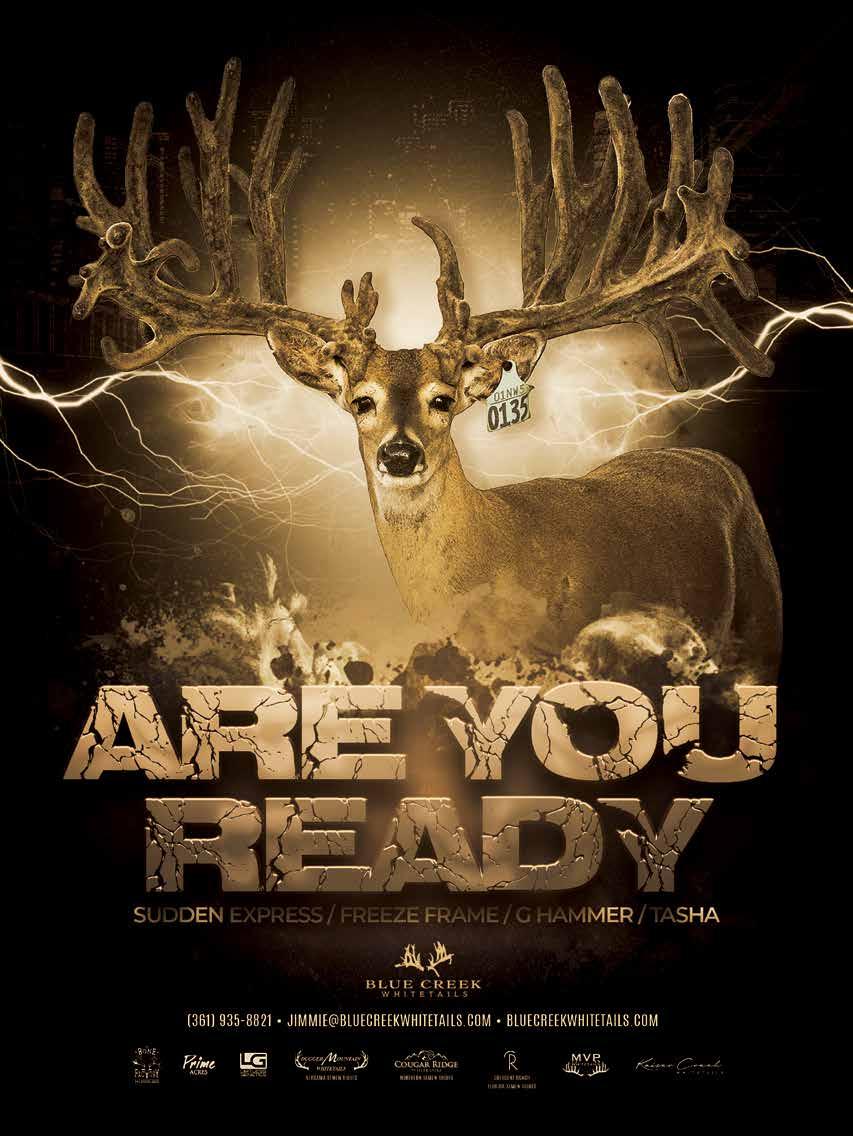


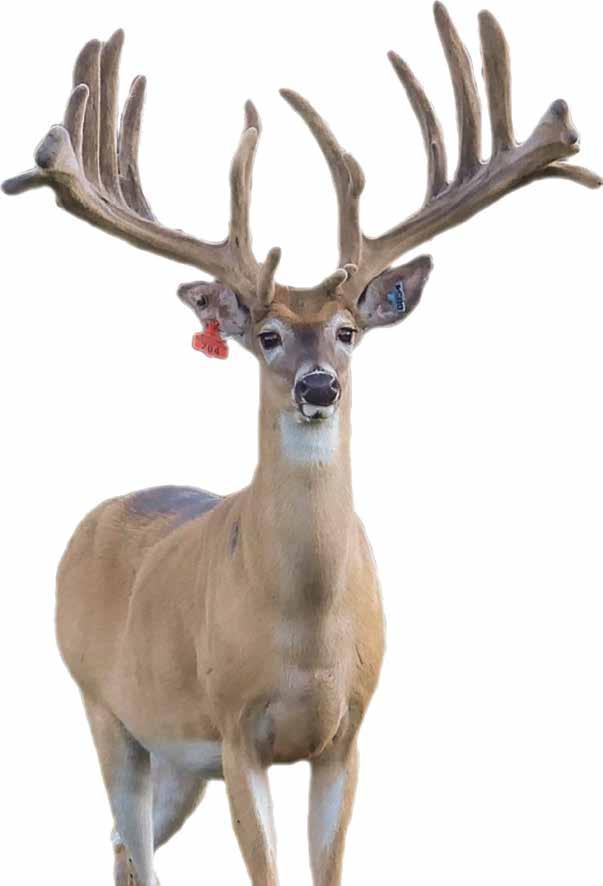
The clock was close to striking midnight when Jake Anderson set out for an eastern Kentucky elk hunt in September of 2013. This trip would be one of several he would take in an effort to not waste the coveted elk tag he had drawn from the Kentucky Department of Fish and Wildlife lottery earlier that summer. His plan, along with packing his hunting bow and camping gear, was to arrive at daybreak to scope out promising areas for the harvest.
“The maps provided by fish and wildlife were terrible,” Anderson, who was 25 at the time, said. And even though he stopped at several places to ask the locals about elk sightings “no one could tell me anything,” he added. “This was all on public land with no guide.” It took five trips. The first was with one of his hunting friends. Although on that trip Anderson squarely landed an arrow into a really sizable bull, the big elk was completely unfazed by the shot and continued on chasings cows, until completely disappearing from sight. His fifth trip found him shooting a fatal arrow into what Anderson still
considers his “once-in-a-lifetime” freerange elk. Luckily, the elk had expired on a dirt road on land formerly used for mining, and Anderson was able to bring his truck into the exact location and load the entire body into his truck bed.
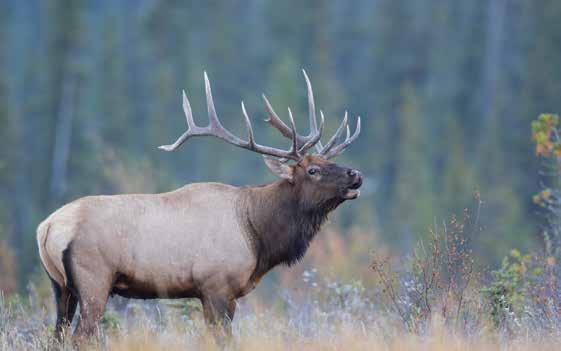
Ironically, as he arrived to this particular spot to gather his elk, he found five elk standing right there, all bigger than the one he had just taken down. “I thought ‘you gotta be kidding me. This is just my luck,” Anderson said, even though he was really happy with his hunted treasure. During another hunt, a whitetail hunt in Kansas, both Anderson and his uncle had shot an arrow at a buck. Anderson, however, had taken and landed the first shot. Both men, upon searching for their deer, thought that their arrow had certainly been the fatal one. However, when they found the buck, only one arrow was in it. “That was another memorable hunt that really stands out for me,” Anderson said.
Yet, in all the hunting adventures he’s enjoyed throughout the years, Anderson has noticed one thing. Public land for hunting decreases every year.
According to internet research, rapid urban sprawl has been responsible for close to 14,000 square miles of land development between 2001 and 2019, which comparatively is an area roughly five times the size of the State of Delaware. Real estate values for farmland have also increased substantially throughout recent years, making selling the land more enticing particularly in states such as Pennsylvania, Ohio, Michigan and Florida. Other states experiencing the most accelerated urban growth have included Texas, Illinois and North Dakota. “Unless you own land or are leasing it, our opportunities to hunt in open range are going to be gone,” Anderson, owner of Anderson Whitetails in Guston, Kentucky, said. “There is less and less land to hunt and we are going to get to a point where there will be no place left to hunt. This is where we are lucky to have high fence hunting. You could hunt your whole life and never have the opportunity to shoot one like you have in a preserve.”
“Without high fence hunting, it is so hard for an individual to find somewhere to hunt that’s not developed or leased out,” Anderson emphasized. “If I visited a preserve, I’d like to get another elk. Same for other hunters. It wouldn’t have to be just a whitetail. You might be sitting in a deer stand an elk goes walking by and you change your mind and want one of them instead. And you wouldn’t have to go through the hassle of entering a lottery and getting a special tag. Preserve owners are playing a vital role in current and future land conservation, and in providing the sustained opportunities to enjoy unforgettable hunts.”
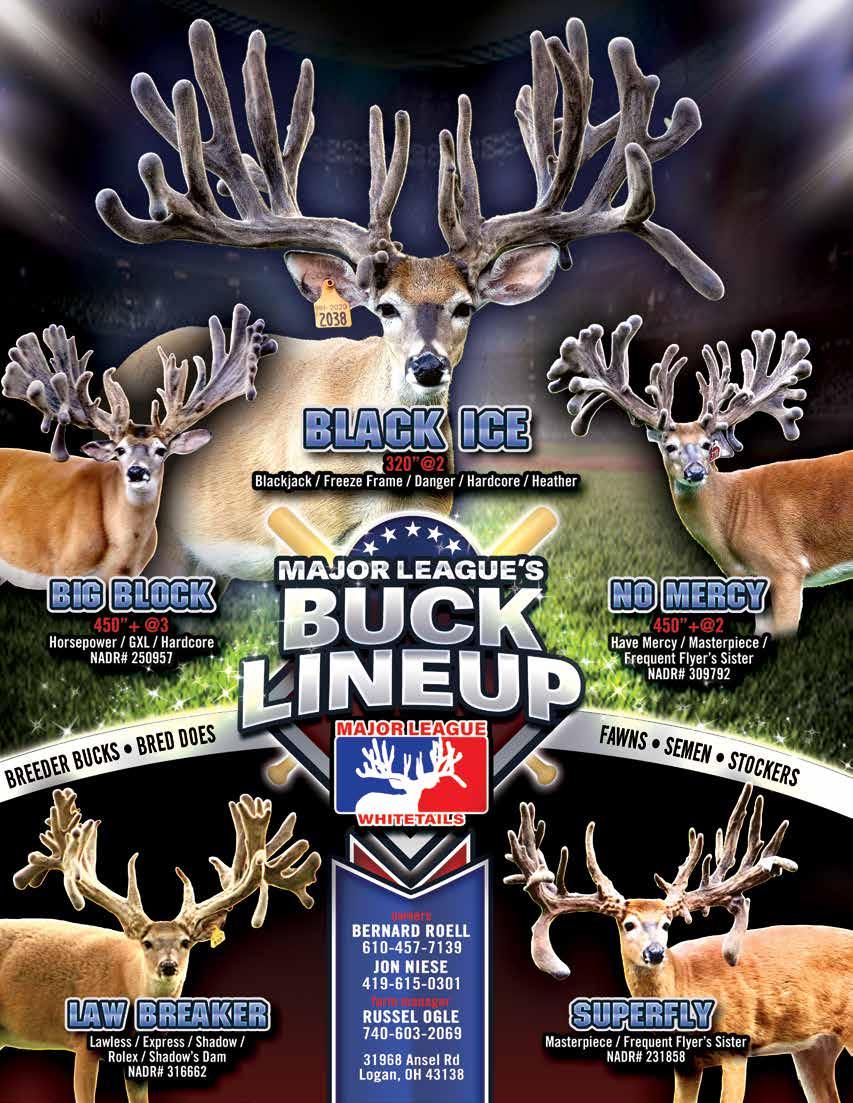




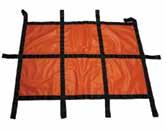




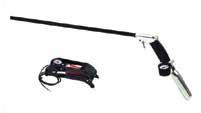





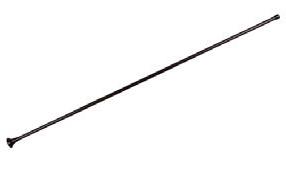

• Fawns up to 1 week of age: Feed 16 oz. of formula daily, divided into 4 – 6 feeding.



• Fawns 1 week to 1 month of age: Feed 24 to 30 oz. of formula daily, divided into 4 feedings.
• Fawns 1 month to 2 months of age: Feed 30 to 35 oz. of formula daily, divided into 2 to 3 feedings.

• Fawns 2 months to weaning: Gradually decrease formula and number of feedings to approximately 15 oz. of formula once daily until fawn is fully weaned at 12 to 14 weeks of age. Provide a weaning diet and fresh clean water to the fawn. For oral use only. These feeding directions are guidelines. As each animal is an individual, the feeding rate may be increased or decreased according to the needs of the neonate.
Feeding directions for other species can be found on our website.


The rules for sudoku are simple.
A 9×9 square must be filled in with numbers from 1-9 with no repeated numbers in each line, horizontally or vertically. To challenge you more, there are 3×3 squares marked out in the grid, and each of these squares can’t have any repeat numbers either.
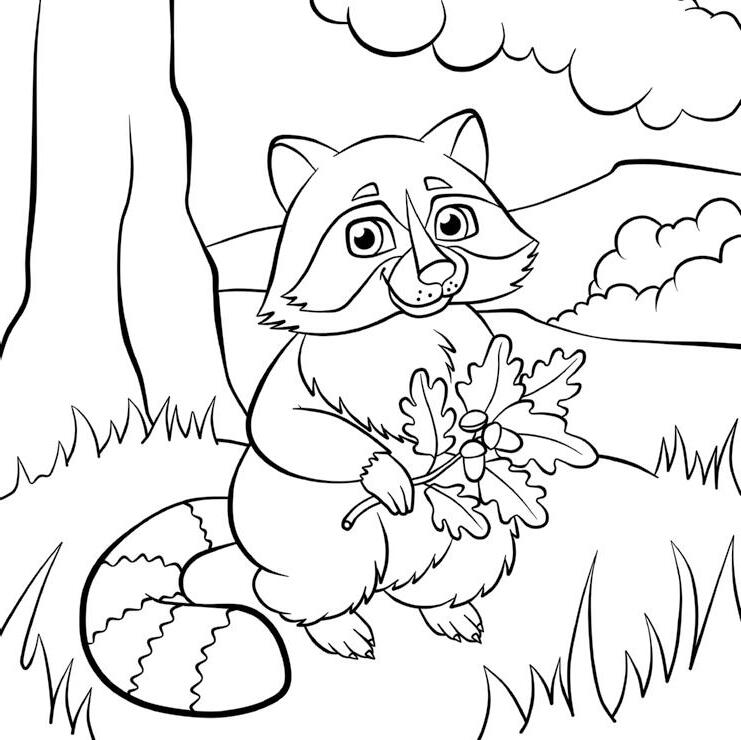

Send in this picture with your childs name and age for a chance to be featured in the next magazine or on our facebook page!
All ages welcome to participate!
Pictures can be emailed to deerassociations@gmail.com or mailed to
Samantha Uchytil
19291 59th St NE
New London, MN 56273


 By: Gail Veley • Sponsored by MDFA
By: Gail Veley • Sponsored by MDFA
Scott Fier drives down the long scenic road from the center of town to his 30-acre deer farm of 21 years, Buffalo Ridge Whitetails in Porter, Minnesota. Trees are beginning to turn from green, to gold and crimson as the season of fall settles on the horizon, accompanied by shorter days and cooler temperatures. T-shirts are replaced by sweaters and jackets. Fawns are well on their way to being weaned. And it seems just about the time they are, preparation for breeding season begins. While careful management strategies dictate that some deer farmers opt for live cover certain years, other farms rely exclusively on semen straws to diversify their genetics, breed for CWD resistance, acquire more buck or doe fawns or perhaps incorporate more powerful doe lines. Depending on herd size, your budget or the amount invested in a semen straw (which can range in price anywhere from $100 to $10,000 per straw) deer farmers have three options for breeding their prized does. These options include vaginal insemination, laparoscopic artificial insemination (LAP A.I.) or embryo transfer.
While vaginal insemination may cost less up front and not require as much preparation, an entire semen straw, delivered via an insemination gun, must be administered per doe. While this does not necessarily require a vet to be present, comparatively, using LAP A.I., two to three does can be bred per semen straw. However, A.I. procedures require a veterinarian to perform the procedure which is akin to surgery. Whichever method you use “you’re going to have some expense either way,” said Fier. However, the ultimate decision as to which method to use may come down to how much
each semen straw costs. The higher the cost, the more likely you will be to use LAP A.I. and increase the number of fawns with those high-end genetics, Fier, 43, explained. Preparing for these procedures requires the farmer or paid professional to handle each straw with great care. While semen straws can be stored indefinitely in storage tanks, the liquid nitrogen inside each tank (responsible for keeping the temperature -300 below zero) must be refilled quarterly and acquired through your local semen storage facility, where semen can also be stored and maintained. Once out of the tank, straws must be placed in 96degree water in a thermos to thaw for approximately two minutes. “Always try to use the thawed semen as quickly as possible,” Fier said. “It can remain viable as long as the straw is used within 20 to 30 minutes.”
Does receiving vaginal insemination are generally run through a chute where they may or may not be sedated. Does receiving LAP A.I. are always sedated, tilted on their backs and shaved around their teats and bellies. Upon sanitizing those areas,
a veterinarian makes a tiny slit near the udder and using a microscope and tiny needle, injects semen into each uterine horn. While the success rate of vaginal insemination and LAP A.I. is very good, farmers typically use a “back-up” buck around the 18th day after insemination, to ensure the highest chances of doe pregnancy. DNA tests can prove whether fawns are the prodigy of the semen straw or the back-up buck, once they are born. However, an earlier delivery date points to vaginal insemination, LAP A.I. or embryo transfer. In addition to selecting a procedure that fits your needs and budget, deer farmers can also choose between conventional semen straws with 75mm per .5cc straw or approximately 50 million sperm cells or sexed semen straws with .25mm per straw or approximately 9 million sperm cells. However, given the amount of does a deer farmer may want to breed, bigger farms may feel that LAP A.I. is usually the best choice given a semen straw will go farther, Fier said. The question is “do you want to breed 10 does or 50?”


Micr ochips
• USDA 15 digit ISO
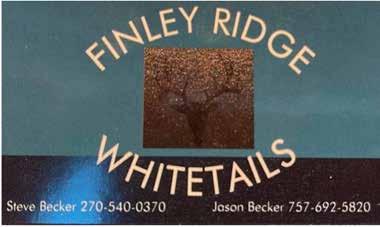


• 9 digit Avid and 10 digit Euro.

Avid Reader s
• Avid MiniTracker Livestock Reader specially priced.




• Blue Tooth® option.
• Dependable Fast, Accurate read EVERY Time!
• U.S.A. made and service.

IF YOU HAVEN’T TRIED PNEU-DART’S RDDS, YOU’RE MISSING MORE THAN YOUR TARGET


Did you know impact trauma can negatively influence medical treatment? We do. Which is why we’ve spent 50+ years perfecting the ideal remote delivery device. Shorter in length and lightest on the market, our disposable RDDs, with patented Slo-Inject technology, provide ultimate accuracy while reducing the potential for problematic hematomas.
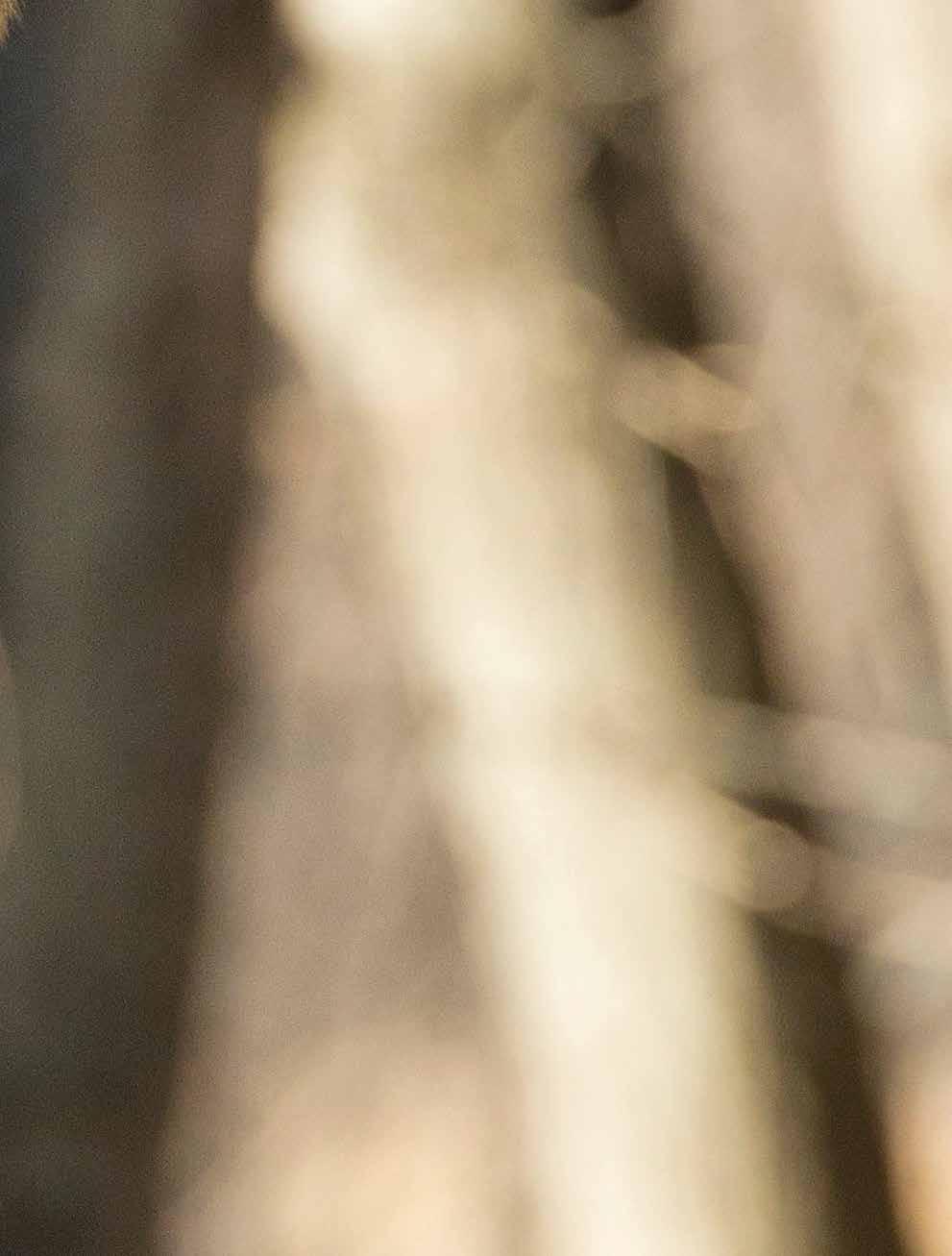
Don’t miss your target. Hit it with Pneu-Dart.

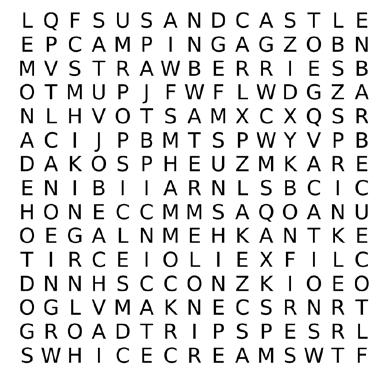
Strawberries
Canoeing
IceCream
Vacation
Camping
Bonfires
Beach
Watermelon
Popsicles
Sprinkler
Lemonade
Hiking
Hotdogs
Sandcastle

Roadtrips
Sunshine
Hammock
Barbecue
Picnic Lake

Answers to puzzles will be available in the next issue, or can be found on our website: www.deersites.com


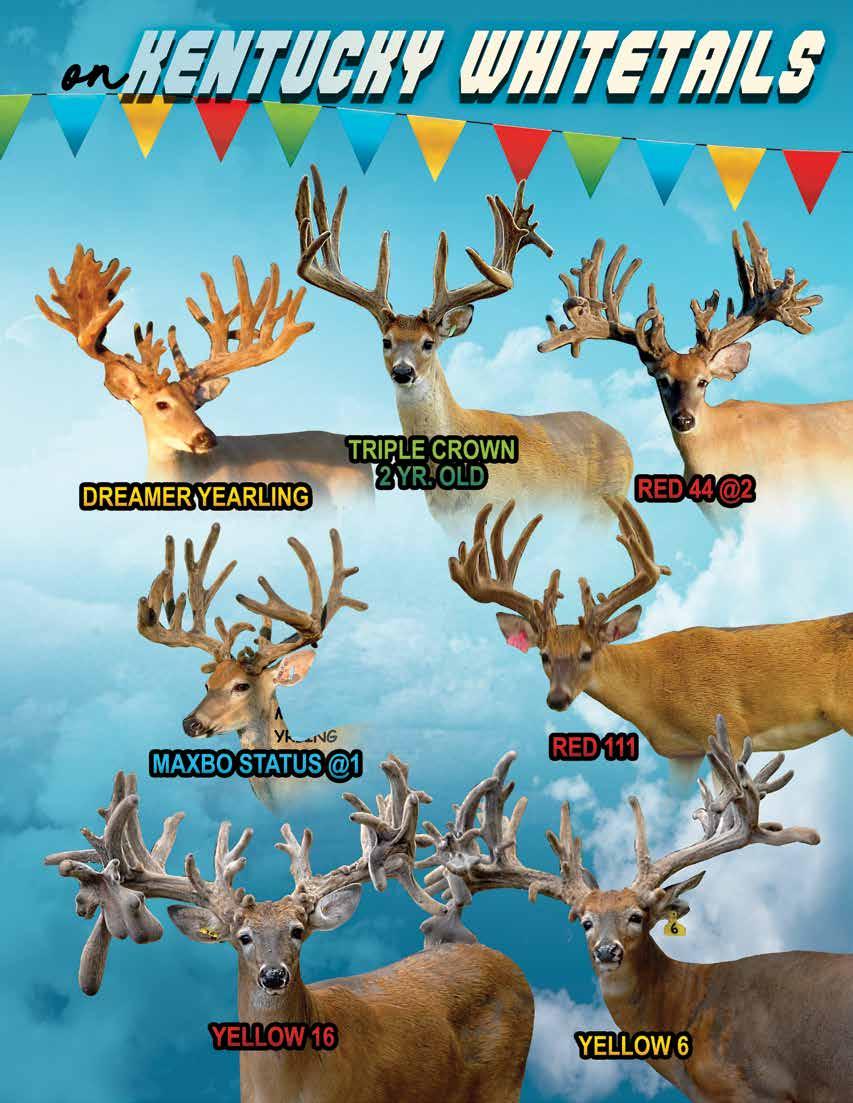
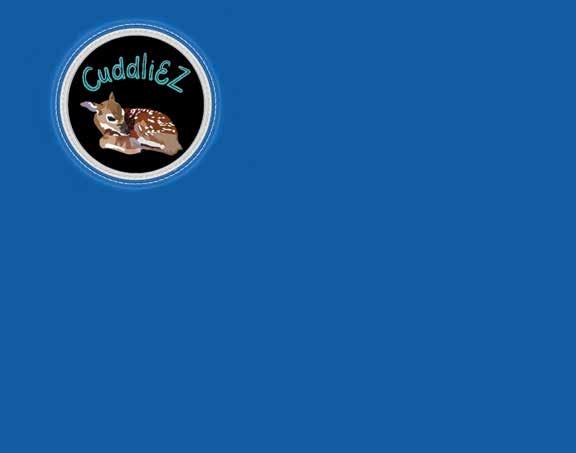

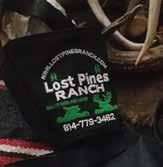
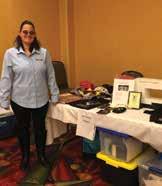
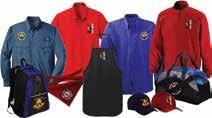


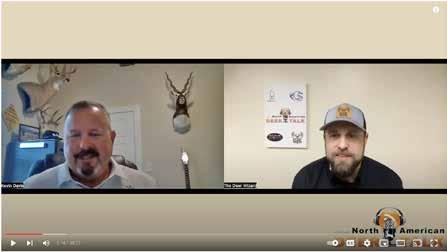



All advertisers that are published in our 2023 state associations magazines will have the opportunity to place a single Buck update photo in this August Showcase Book.
Reservation for space and buck info will be due no later than July 7-12 2023. If you have an existing picture ready to go, that will also be due at this time. If you would like to send in a last minute photo of your buck, the cutoff date is August 14th by 8am CST. Placement will be in order of first come first serve. Printing and mailing will start August 15th and be in hand between August 21-25th. Just in time for semen sales getting ready for Breeding Season. These will be mailed to members of the 15 state associations we service.
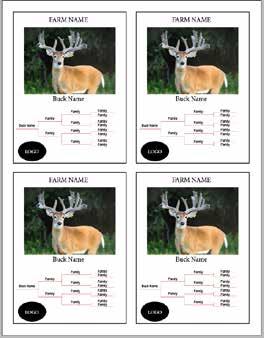
(More information will be mailed out to all current advertisers closer to the date)
Cost: $100
1 per Cervid Farmer
(Pre-register and we will contact you for further information)
Name: First Last Farm
If you are not a current advertiser, sign up for a yearling package to be eligible to participate! - Half or Full page
Address City ST Zip _____________Phone________________ Email Fax
SCIENTIFICALLY
HELP GROW LARGE, HEALTHY DEER AND BIG ANTLERS!

Nutrient rich formula contains highly bioavailable ingredients, including our proprietary calcium/phosphorous complex with Antler D TM, that are required to support body and bone growth, especially for fast growing bucks
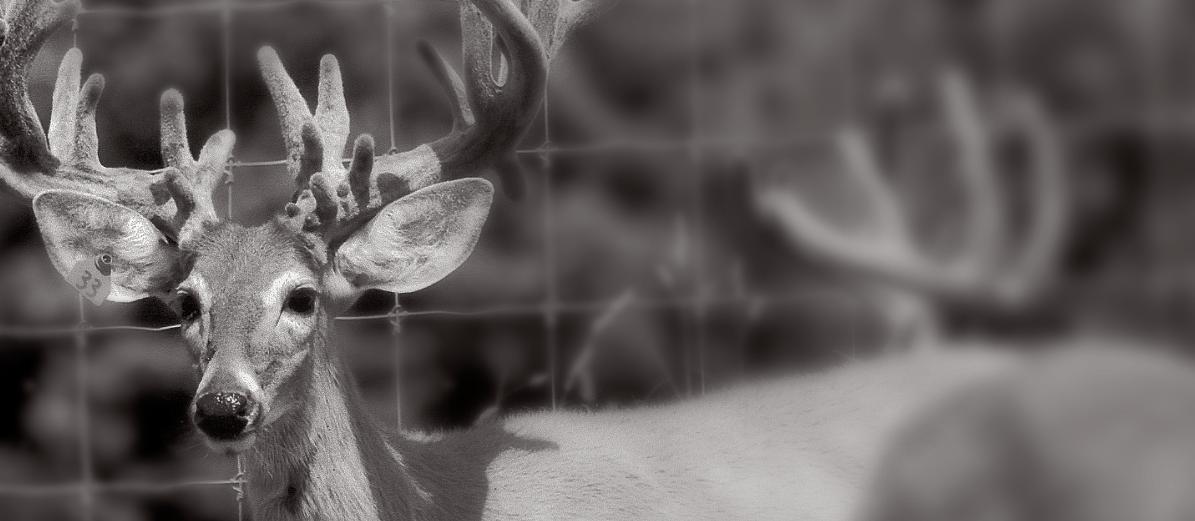
Contains probiotics and targeted enzymes to support gut health and proper digestion
Available in pellet or powder that can be top dressed or mixed in feed. Great for antler growing season and young bucks, too

PRECISELY FORMULATED TO HELP MAINTAIN A NORMAL AND RELAXED DISPOSITION IN ALL CERVIDS
Provides optimal levels of magnesium, Vitamin B1 and inositol to promote calmness and provide help for restless animals
Contains no herbals, tryptophan or chemicals, eliminating concerns of unwanted side effects
Use PeaceMaker to “keep the peace” during pre-rut, rut, transportation, weaning and anytime destructive behavior may occur
POWERFUL SOLUTION FOR HEALTH & PRODUCTIVITY
Helps maintain digestive health and productivity
Contains micro-encapsulated probiotics, targeted enzymes and a novel fiber complex
Use in does before fawning, during lactation and all cervids during times of environmental stress
FAWN ARRIVAL™ POWDER &
HELPS PRODUCE HEALTHY, FAST GROWING FAWNS
Helps maintain normal digestive health
Supports a healthy immune system
Feed powder for 14 days to bottle fed fawns

Paste is ideal for fawns left on does

FAWN & DEER XTR™
ROBUST FAST RESPONSE FOR FAWNS & OLDER DEER
Innovative formula delivers max digestive support, especially in newborns
Rapidly delivers help for GI health and a functioning immune system
May also be used post-tranquilization to support healthy recovery








 By: Gail Veley • Sponsored by WOL
By: Gail Veley • Sponsored by WOL
Preparing your bucks for the hunt begins long before warm and humid summer months turn into cooler and crisper fall days. Although the feeling of autumn ascending upon the earth makes hunters usually think of only one thing – hunting – preserve owners have begun preparing for those hunts months before. In fact, it may feel as though they are always perpetually preparing in one form or another. However, February can be a crucial month in this overall process. “After the hardest part of the winter is over, I start in February making sure I have enough protein available to my bucks in my preserve who were not harvested the year before,” said Brandon Bollinger of 2 Brothers Whitetail in Loranger, Louisiana. “Protein gets them from the rut back into condition. The key is their body condition.”
An essential source of protein can be found in clover plots. “You want to make sure those are ready for spring,” Bollinger, 47, said. “The key to growing big deer is putting a buffet in front on them and as little amount of stress as possible.” Bollinger, who makes a point of closely watching and surveying his bucks all summer, starts rolling his preserve cameras in July, in an effort to
ensure those bucks, currently residing inside, are ingesting enough adequate protein to meet size standards for the upcoming season. Bucks currently residing in pens are also closely monitored as plans progress to stock the preserve. And although Bollinger raises enough of his own bucks to not need to buy more, he feels that selling some of his own while acquiring some from other farms, keeps his inventory varied and perhaps more appealing to hunters.
Bollinger, in addition to knowing how to raise the most appealing buck, has also learned through the years the most appealing circumstances of introducing bucks into a preserve. “I start in August while they are still in velvet,” he said. “Don’t do it the day before a hunt. Put them in the preserve in August while they are in velvet and learning where they want to be, and they are calm. You also need a 30-day buffer to make sure the medications they need for transport are out of their system.” Preceding these precautions is the most valuable advice: Introduce them into the preserve at night. “You have much less of a chance of losing them because it’s not as hot.” Although some preserve owners prefer a method of introduction referred to as “soft launching” by first placing deer in a large pen inside the preserve, Bollinger finds that “day of” or prompt introductions can work just as well.
In an effort to make this type of introduction as safe as possible, Bollinger also advises to not only have food and water sources located interiorly of your preserve, but all along the fence line as well, as deer tend to gravitate to the fence
and pace and without easily accessible water and food, could dehydrate and die. In also realizing that deer learn the sound of an ATV or truck means food is coming, he makes a habit out of dropping hunters off during hunting season from a vehicle, making it easier for them to slip into advantageous places. Although Bollinger takes every precaution necessary to make sure his deer thrive, fatalities are inevitable. “I always have or carry a 10 buck “buffer” from what I grow compared to what I buy, which is about a 20% buffer overall,” he explained. “We hunt about 60 bucks a year.”
While the thrill of the hunt is the most compelling part of deer farming, feeling compelled to create understood payment terms between seller and buyer is what may keep a deer farmer in business. “When you are buying stockers, you should have a very clear warranty period. This is very important. The general rule is seven days. Should deer purchased not survive beyond seven days, the seller usually compensates the buyer in some form or another, Bollinger said. “Make sure you have an agreement in place.”



